What Are The Key Requirements For Declaration Of Ingredient Lists?
July 20, 2022
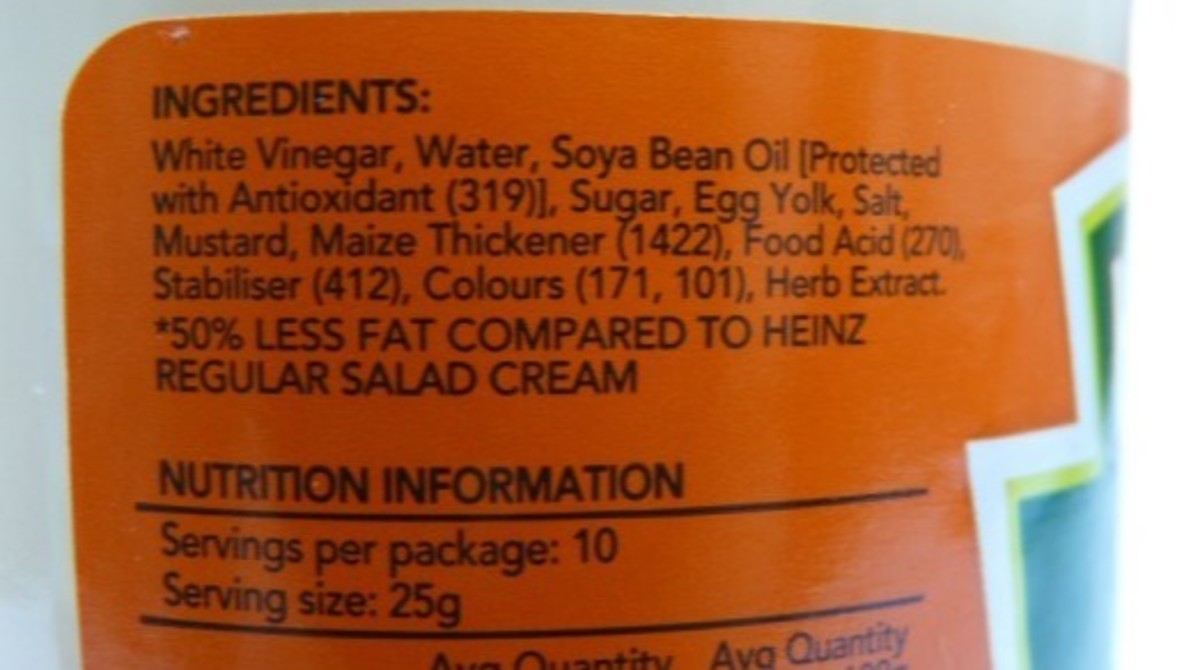
The ingredient list forms a very integral part of the food label giving information about what the food product is actually made of. It consists of names of all those individual ingredients from which the final product has been made. It is kind of like the ‘trailer’ of what the ‘movie’ will be all about and whether it will be worth it.
The Codex Alimentarius defines an “Ingredient” as any substance, including a food additive, and any other constituent of a compound ingredient, used in the manufacture or preparation of a food and present in the final product although possibly in a modified form. This means that even food additives including preservatives, added colours and flavours are considered as ingredients and are very much a part of the ingredient list.
According to the Food Safety and Standards Authority of India, the ingredient list is a mandatory requirement to be declared on the product label. The same is followed by all international standards as well, with slight tweaks here and there. All standards profoundly state the requirement of mentioning the ingredient list in the descending order of its quantity. Hence the first three ingredients in this list become very important as it forms the major part of the product itself.
Basic Guidelines for Ingredient Declaration
Except for single ingredient foods (named in such a way that the nature of the ingredient is clear) a list of ingredients should be declared on the label.
The list of ingredients shall contain an appropriate title – Ingredients / List of Ingredients
All ingredients in the food must be declared using the common name of the ingredient or a name that describes the true nature of the ingredient.
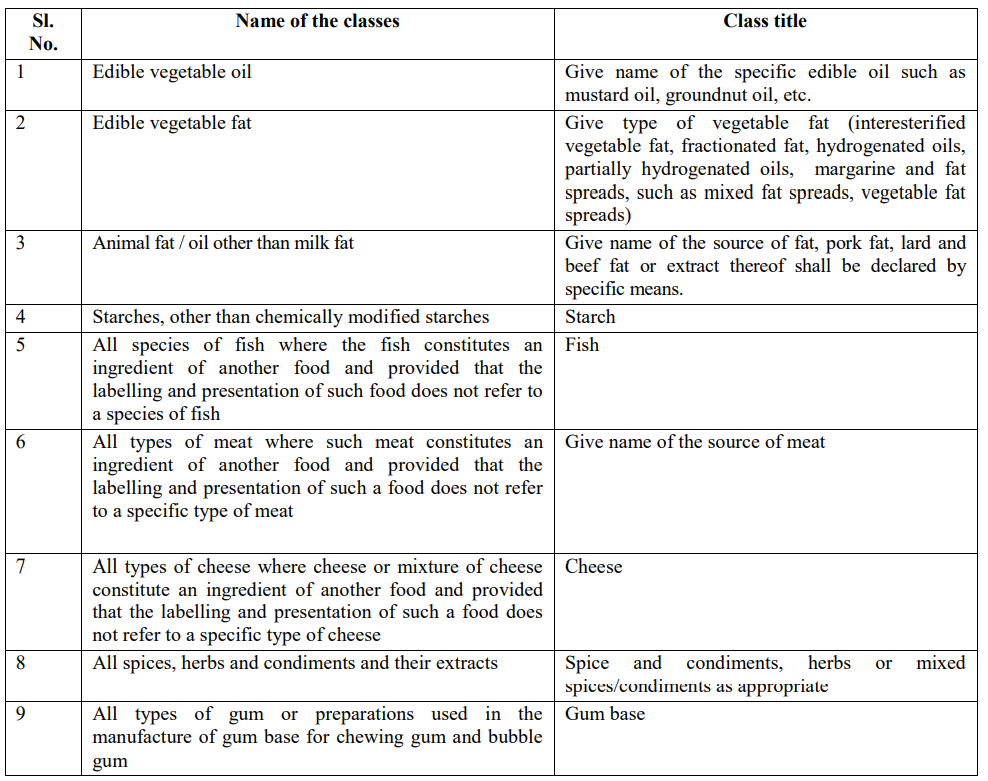

The ingredient list should be written in descending order of quantities as the case may be at the time of its manufacture.
If an ingredient is a product of 2 or more ingredients (Compound Ingredient), the same should be declared either in brackets after the name of the compound ingredient or all of the ingredients of the compound ingredient as if they were individual ingredients of the final food
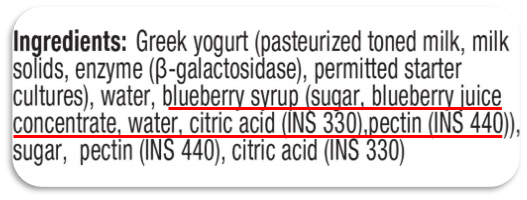
Declaration of all ingredients of compound ingredients is mandatory except where a compound ingredient constitutes less than 5 percent of the food (no exceptions for food additives that serve the technological function in the food products).
Constituents are not required to be included in the ingredient list
Non-functional carryover additives: A food additive present in a food at a level less than that required to achieve a technological function.
Carriers for additives, enzymes, flavourings and nutrients.
Additives, enzymes and other substances are used as processing aids.
Water - where it forms a part of an ingredient, such as brine, syrup, or broth, used in the compound food or other volatile ingredients evaporated in the course of manufacture.
Quantitative Indications
The legislation requires the number of certain ingredients in pre-packaged foods to be
indicated as a percentage.
The indication can be given with the name of the food in the ingredients list.
This is applicable where the ingredient-
•is emphasized on the label through words, pictures or graphics is essential to characterize •the food and is expected to be present in the food by consumers
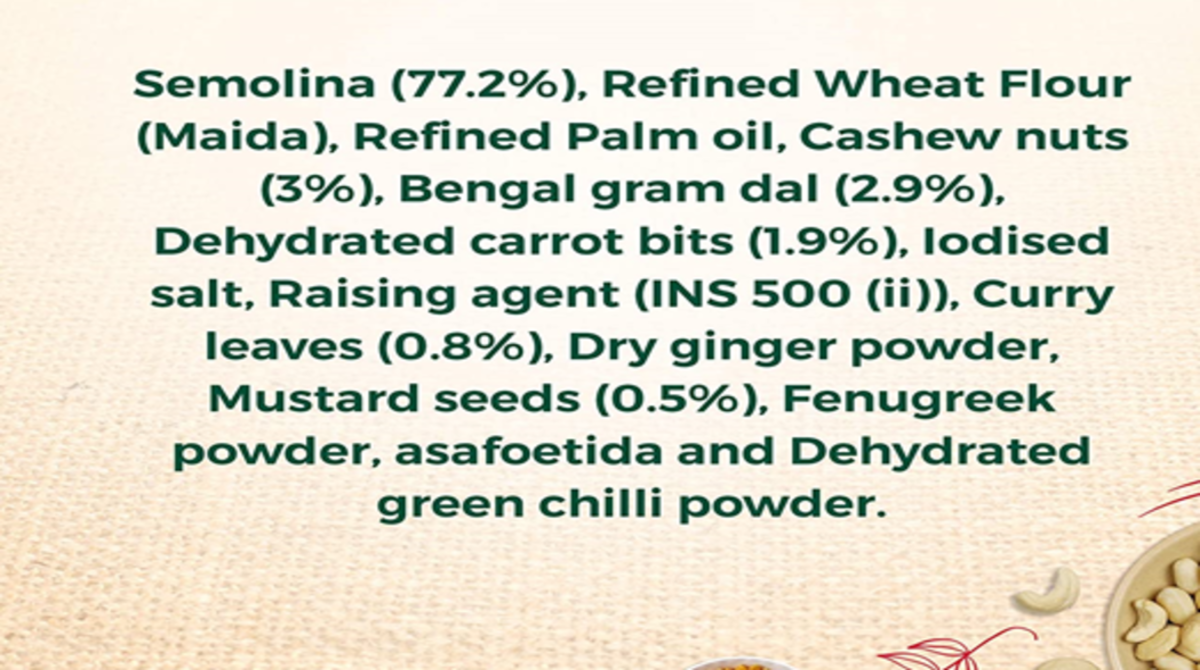
The Indian legislation identifies the following 8 foods and ingredients which account for over 90 percent of all documented food allergies.
Cereals containing gluten; i.e., wheat, rye, barley, oats, spelt or their hybridized strains and products of these (To be declared as the name of the cereal);
Crustacean and their products (To be declared as Crustacean);
Milk & Milk products(To be declared as Milk);
Eggs and egg products (To be declared as Egg);
Fish and fish products (To be declared as Fish);
Peanuts (To be declared as Peanut)
Tree nuts (e.g. almonds, walnuts, pistachio, cashew nuts) and their products (To be declared as Nut);
Soybeans and their products (To be declared as Soy);
Sulphite in concentrations of 10mg/kg or more (To be declared as sulphite)
These should be declared separately as Contains............... (Name of allergy-causing ingredients). In case of cross-contamination with ingredients that cause allergy, it may be declared separately as May Contain................. (Name of allergy-causing ingredients).
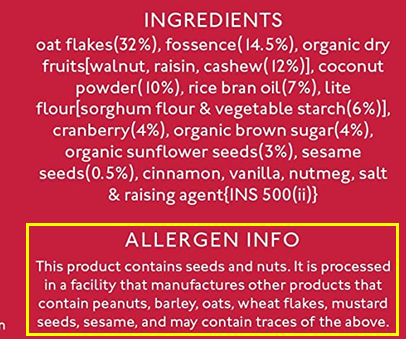
Food Additives Declaration
A food additive present in a food in an amount sufficient to perform a technological function should be included in the list of ingredients.
Food additives shall be declared with the specific name(s) or recognized International Numbering System (INS)
Flavouring agents added to foods should be declared in the ingredient list in the following manner:
i) Artificial flavouring substances - the common name of the flavour should be declared
ii) Natural flavouring substances or nature-identical flavouring substances - the class name of flavours should be declared

These Standards have brought transparency to aid the consumers to get the full picture of the product before purchase.
References:
Food Safety and Standards Authority of India. Product Standards. Food Safety and Standards (Labelling and Display) Regulations, 2020.

Olivia Crasto (MSc in Food Processing & Preservation)
Olivia is a Learner for Life, Eco enthusiast and loves to experience nature and its beauty
